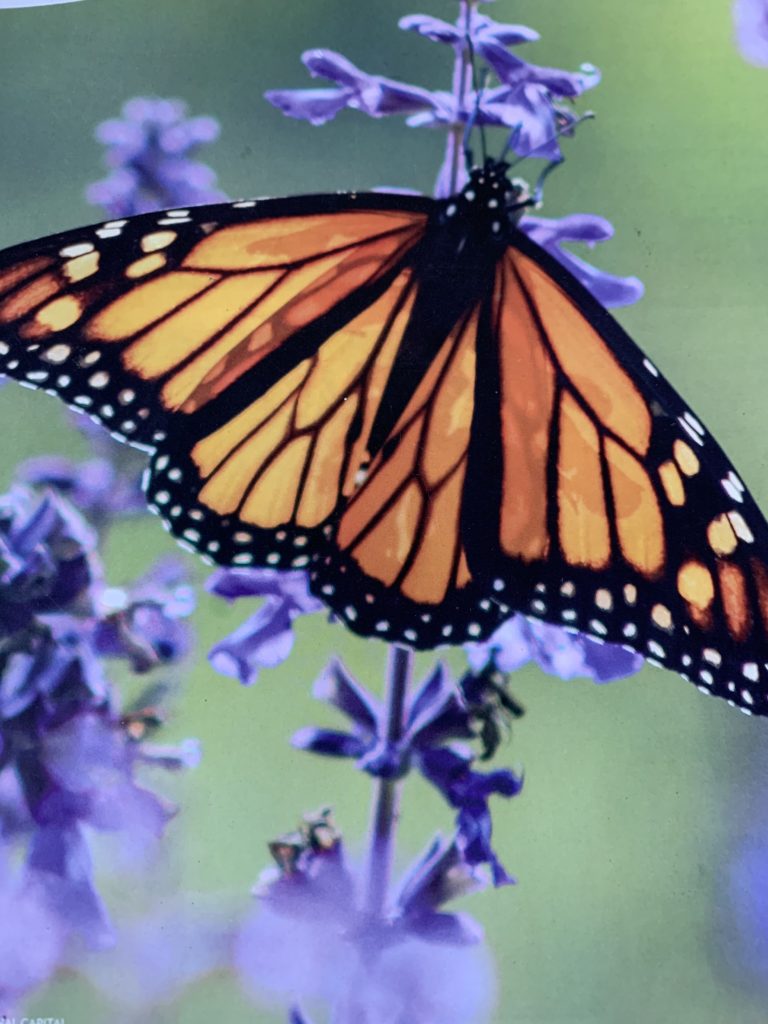Gardening for Health

Butterflies for a Better Bay
By Maria Price
The Chesapeake Bay Trust has awarded a grant to the College of Southern Maryland for a program called “Butterflies for a Better Bay.” The goal is to reestablish Chesapeake Bay watershed meadows as a community ecosystem restoration. This is a project of Paul Billeter, a CSM biology professor and Dr. Tracey Stuller of the CSM Environmental Sustainability Committee. Since monarch butterflies are the most recognizable butterflies, famous for their beauty and their incredible 2,000-mile seasonal migration, they will help to encourage interest in preserving the Chesapeake Bay by encouraging watershed native plant restoration. This will help to improve water quality in local streams and waterways, reducing storm flow volume and pollutants entering waterways.
We can all do our part in this effort to help restore the Chesapeake Bay watershed. We can all help to establish butterfly meadows and corridors on small plots in our yards by planting native plants that butterflies need to flourish. It’s important to include the host plants that butterflies lay their eggs on, which produce caterpillars that eat these plants for their specific larval food. We also should add native plants that produce a lot of nectar that adult butterflies thrive on. If we all did a small patch in our gardens or wherever some vacant land could be used, it could all add up to a big effect around the Bay.
Picture a sunny wildflower meadow or small little garden plot, humming with the activity of bees, dragonflies and colorful butterflies while at the same time resulting in cleaner waterways.
To start, remove all weeds from where you’re putting your native plant habitat. You can start with a regional wildflower seed mix or put nursery grown native plants in. Many perennials take about three years to get established. Many bunch grasses form clumps that feed and shelter birds, insects and small mammals. Some of these are Indian grass, brown sedge and prairie drop seed. Leguminous plants such as false indigo fix nitrogen in the soil and are caterpillar hosts for sulphurs, hairstreaks, blues and skippers.
One of the most important perennial families are the milkweeds. Most of these provide larval food for butterflies. Butterfly weed, a bright orange flower, swamp milkweed and common milkweed all feed monarch butterfly larvae.
Golden alexanders host the black swallowtail butterfly, white turtle head hosts the Baltimore checkerspot, and rough-leaved goldenrod hosts the Baltimore and silvery checkerspot. American ladies lay their eggs on pussytoes. Nectar plants include: native asters, mistflower, mountain mints, sweet pepper bush (Clethra), purple coneflowers, and Joe-Pye weed.
There are many more than what I’ve mentioned here. Join me on Saturday, May 15 for a native plant sale and garden tour at Beaver Creek Cottage Gardens, 11am-6pm, to learn more (8117 Beverly Rd., Severn, Md., 21144).
